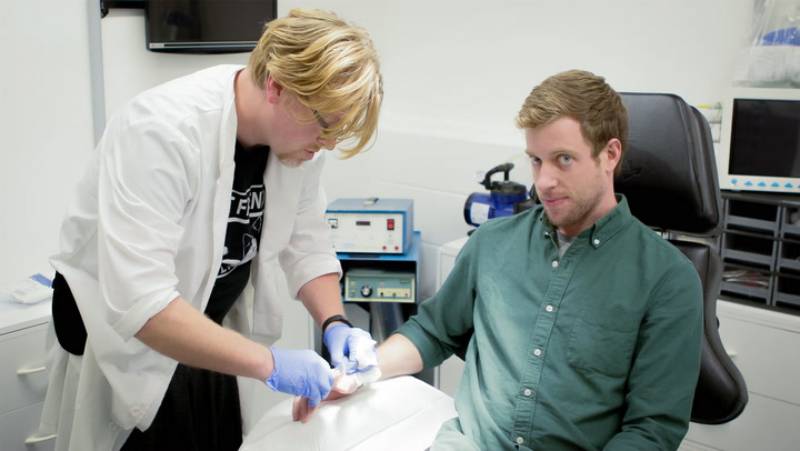The Science Blog

The Ethics of DNA Manipulation: Where Should Science Draw the Line?
In recent years, the intriguing concept of biohacking has garnered significant attention. It raises a plethora of questions about the potential to enhance human capabilities. Biohacking blends science fiction with real life. It’s a growing field that explores what it means to be human. But what exactly is biohacking, and can we truly upgrade the human body through this revolutionary movement? This blog looks at biohacking. It focuses on human enhancement, gene therapy, and how biohacking affects society.
Biohacking, often referred to as DIY biology, encompasses a broad range of practices aimed at enhancing the human body and mind. While some perceive it as a futuristic endeavour, others view it as a natural progression of human evolution. This article explores biohacking. It looks at its benefits, ethical issues, and how gene therapy helps in enhancing humans.
Key Benefits / Why It Matters
The Relevance of Biohacking
Biohacking is not merely a niche interest; it represents a significant shift in how we perceive and interact with our biology. Its importance grows as more people want to push past human limits. They aim to boost brainpower, enhance physical abilities, and live longer. The biohacking movement redefines human potential. It shows a future where people can shape their own biological destiny.
Real-Life Applications and Insights
The applications of biohacking are diverse. It ranges from simple lifestyle changes to complex genetic modifications. Intermittent fasting is a popular biohacking method. It can boost metabolic health and help you live longer. On a more advanced level, gene therapy offers the potential to treat genetic disorders by altering an individual’s DNA. This new method has made progress in treating cystic fibrosis and muscular dystrophy. It shows the amazing potential of biohacking.
Step-by-Step Guide / Actionable Insights

Understanding Human Augmentation
Human augmentation means boosting human abilities using technology or biology. It encompasses a wide array of techniques, from wearable technology to genetic engineering. Here’s a closer look at some of the key methods:
Wearable Technology
Wearable devices like fitness trackers and smartwatches are popular forms of human enhancement. These gadgets give real-time health data. This helps people make smart choices about their wellbeing. While they may not alter one’s biology, they represent a crucial step towards integrating technology with the human body.
Genetic Engineering
Genetic engineering is at the forefront of human augmentation. It offers the potential to modify an individual’s genetic makeup. Scientists can now edit genes with great precision using CRISPR-Cas9. This technique opens doors for treatments aimed at specific genetic disorders. This approach could boost human abilities. It may increase muscle mass and enhance cognitive function.
The Role of Gene Therapy
Gene therapy is a cornerstone of the biohacking movement, providing a means to correct genetic defects at their source. By introducing, removing, or altering genetic material, gene therapy aims to treat or prevent disease. This new method has worked well in clinical trials. It gives hope to those with conditions that were hard to treat.
Case Studies and Statistics
One notable example of gene therapy’s success is the treatment of Leber congenital amaurosis. It is a rare genetic disorder that causes blindness. In clinical trials, patients who got gene therapy showed big improvements in their vision. This highlights the promise of this amazing technique. Recent stats show the global gene therapy market could hit £10 billion by 2025. This growth highlights rising interest and investment in the field.
Additional Expert Tips & Common Mistakes to Avoid
Best Practices in Biohacking
Biohacking is exciting, but we must be careful and responsible with it. Here are some expert tips to consider:
- Talk to Experts: Before starting any biohacking, get advice from healthcare professionals. This ensures safety and effectiveness.
- Stay Informed: Biohacking is always changing. New research and developments come out often. Stay informed about the latest advancements and ethical considerations.
- Personalisation is Key: Biohacking is not a one-size-fits-all approach. Tailor practices to suit your individual needs and goals, and be mindful of your body’s responses.
Common Mistakes and Misconceptions
Despite its potential, biohacking is often misunderstood, leading to common mistakes and misconceptions:
- Overreliance on Technology: Technology plays a significant role in biohacking. It should not replace fundamental health practices such as a balanced diet and regular exercise.
- Ignoring Ethical Implications: Human enhancement brings up ethical issues. These include fairness, consent, and possible unexpected outcomes. It is crucial to consider these implications when engaging in biohacking practices.
Advanced Insights / Expert Recommendations
Unique Industry Perspectives
Some people criticise the biohacking movement. They say it could worsen social inequalities and create ethical issues. Proponents argue that proper regulation and oversight can help biohacking advance healthcare and improve human performance.
Experts suggest working together. Scientists, ethicists, and policymakers should join forces. This teamwork can tackle the challenges and chances that biohacking presents. This teamwork across fields can help make sure biohacking is used responsibly. This way, we can maximize its benefits for everyone in society.
Lesser-Known Insights
Much attention is given to the physical aspects of biohacking. Cognitive enhancement is an equally important area of focus. Techniques like neurofeedback and nootropics are becoming popular. They may help improve memory, focus, and mental clarity. These cognitive biohacks can boost mental performance. They are especially useful in areas needing strong focus and creativity.
The Biohacking Revolution – Navigating the Future of Human Enhancement

We stand on the cusp of a new era in human evolution. Biohacking presents both exciting opportunities and significant challenges. The potential to upgrade the human body through human augmentation and gene therapy is no longer a distant dream but a tangible reality. It’s important to move carefully in this new area. We must keep ethics and safety as top priorities in the biohacking movement.
In conclusion, biohacking shows us a future where people can control their own biology. As we explore human augmentation, we must discuss its implications and responsibilities. No matter if you’re an experienced biohacker or just starting out, upgrading the human body needs thoughtful planning, teamwork, and a promise to act ethically.
So, what do you think? Are you ready to embark on your biohacking journey and explore the potential to upgrade the human body? Share your thoughts and experiences in the comments below!









